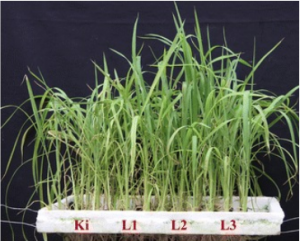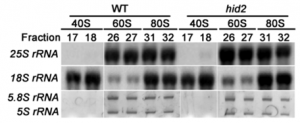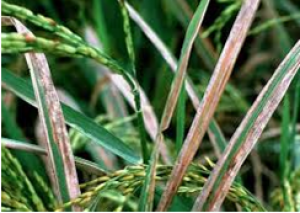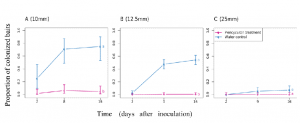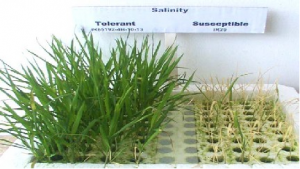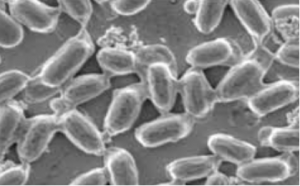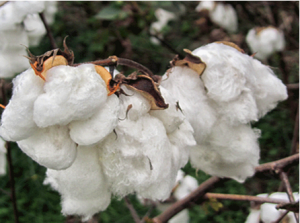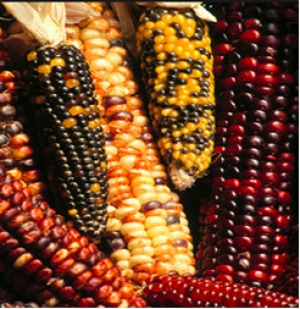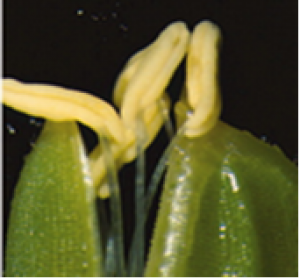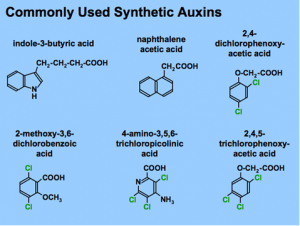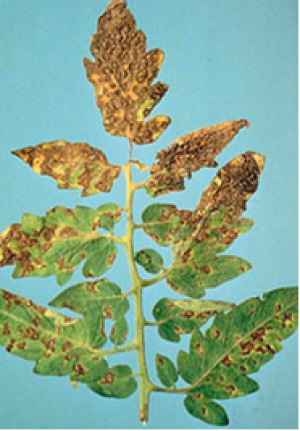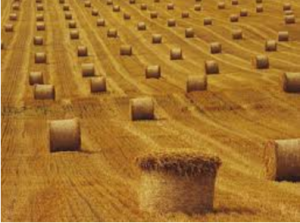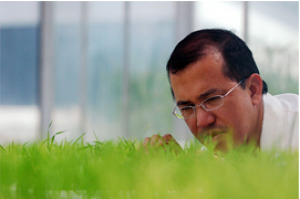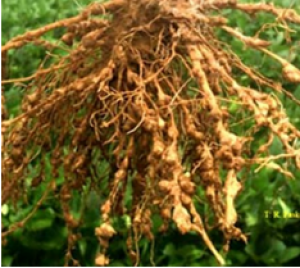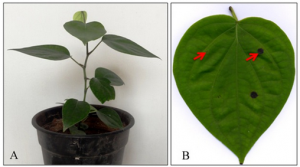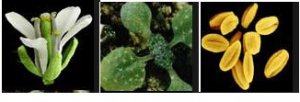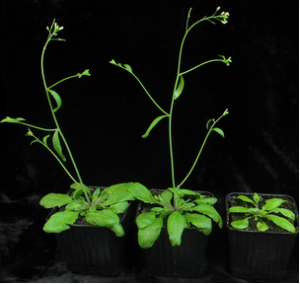|
Transcriptome Analysis of Early Lateral Root Formation in Tomato
Sunday, 2024/08/18 | 06:26:25
|
|
Plants (Basel); 2024 Jun 12; 13(12):1620. doi: 10.3390/plants13121620. AbstractLateral roots (LRs) receive signals from the inter-root environment and absorb water and nutrients from the soil. Auxin regulates LR formation, but the mechanism in tomato remains largely unknown. In this study, 'Ailsa Craig' tomato LRs appeared on the third day and were unevenly distributed in primary roots. According to the location of LR occurrence, roots were divided into three equal parts: the shootward part of the root (RB), the middle part of the root (RM), and the tip part of the root (RT). Transverse sections of roots from days 1 to 6 revealed that the number of RB cells and the root diameter were significantly increased compared with RM and RT. Using roots from days 1 to 3, we carried out transcriptome sequencing analysis. Identified genes were classified into 16 co-expression clusters based on K-means, and genes in four associated clusters were highly expressed in RB. These four clusters (3, 5, 8, and 16) were enriched in cellulose metabolism, microtubule, and peptide metabolism pathways, all closely related to LR development. The four clusters contain numerous transcription factors linked to LR development including transcription factors of LATERAL ORGAN BOUNDRIES (LOB) and MADS-box families. Additionally, auxin-related genes GATA23, ARF7, LBD16, EXP, IAA4, IAA7, PIN1, PIN2, YUC3, and YUC4 were highly expressed in RB tissue. Free IAA content in 3 d RB was notably higher, reaching 3.3-5.5 ng/g, relative to RB in 1 d and 2 d. The LR number was promoted by 0.1 μM of exogenous IAA and inhibited by exogenous NPA. We analyzed the root cell state and auxin signaling module during LR formation. At a certain stage of pericycle cell development, LR initiation is regulated by auxin signaling modules IAA14-ARF7/ARF19-LBD16-CDKA1 and IAA14-ARF7/ARF19-MUS/MUL-XTR6/EXP. Furthermore, as a key regulatory factor, auxin regulates the process of LR initiation and LR primordia (LRP) through different auxin signaling pathway modules.
See https://pubmed.ncbi.nlm.nih.gov/38931052/
Figure 6. Identification and expression analysis of TFs in clusters 3, 5, 8, and 16. The FPKM of TFs in each cluster were standardized for log2 processing, and heatmaps were drawn. The color represents gene expression; red is up-regulation and blue is down-regulation. Above each heatmap is the name of the cluster, the number of genes, and the number of TFs in the cluster. On the right side is the type of TF family. Only TF types with a large number of TFs are marked in the figure. Expression of TFs in 27 samples was assessed by cluster analysis. |
|
|
|
[ Other News ]___________________________________________________
|

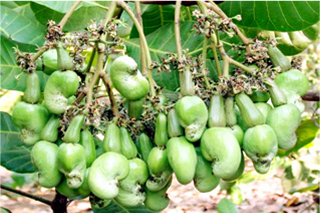
 Curently online :
Curently online :
 Total visitors :
Total visitors :
(279).png)
